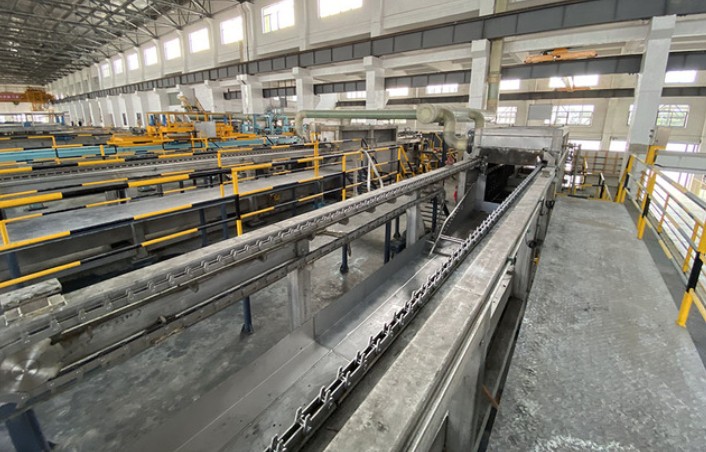NEWS&EVENTS
Home > News&Events > Company news > How to prolong the service life of antimony electrolytic cell equipment
Antimony electrolytic cells are mainly used in the electrolytic refining or electrolytic deposition process of antimony, and their working principle involves electrochemical reactions. The main reasons for the failure of antimony electrolytic cells include: the electrolyte used in the electrolysis process may be corrosive, and long-term action will cause corrosion of equipment materials; stirring, gas precipitation and other operations in the electrolytic cell are prone to wear of equipment parts; the heat generated by the electrolysis process will cause thermal expansion of equipment materials, thereby generating thermal stress, and long-term accumulation may cause deformation or cracking of the equipment; in addition, impurities in the electrolyte may be deposited on the surface of the equipment, affecting equipment performance and accelerating its aging.

First, design optimization and material selection are the basis. The use of new materials such as silicon nitride combined with silicon carbide side blocks, impermeable materials, and graphitized cathodes can significantly improve the corrosion resistance and wear resistance of the electrolytic cell. At the same time, optimizing the structural design of the electrolytic cell, such as improving the sealing gasket and adding protective devices, can reduce the impact of mechanical stress and thermal stress. In addition, it is also key to select corrosion-resistant, wear-resistant, and high-temperature resistant materials to manufacture electrolytic cells, such as the application of titanium in specific environments.
Secondly, operating condition control is crucial. It is necessary to strictly monitor parameters such as current density, temperature, and electrolyte composition to avoid excessive impurity content that may cause plate burning or anode passivation. At the same time, maintain appropriate process and technical conditions, such as stable control during roasting, startup, and normal production to reduce damage to the equipment.
In terms of maintenance, it is necessary to regularly clean the impurity deposits on the surface of the equipment, check the wear of equipment components, and replace severely worn components in a timely manner. At the same time, strengthen daily inspections and maintenance, such as checking the firmness of wind baffles and slot covers to avoid safety risks.
In addition, corrosion and wear protection are also important measures to extend the service life. Use insulation devices, power-off devices, drainage devices, etc. to control stray current corrosion, set sacrificial anodes or use cathodic protection methods. At the same time, apply anti-corrosion coatings on the surface of the electrolytic cell, or use corrosion-resistant materials such as titanium to reduce chemical corrosion. For wear protection, the design of the electrolytic cell protection device can be improved to improve the structural strength and sealing, and prevent damage during transportation, installation, and maintenance.
Finally, thermal stress control and impurity management should not be ignored. The temperature gradient and thermal stress can be reduced by optimizing the heating/cooling process, adopting insulation measures, adding expansion joints, etc. At the same time, the impurity deposits in the electrolyte are regularly inspected and cleaned to avoid local overheating or corrosion of the tank due to precipitation.